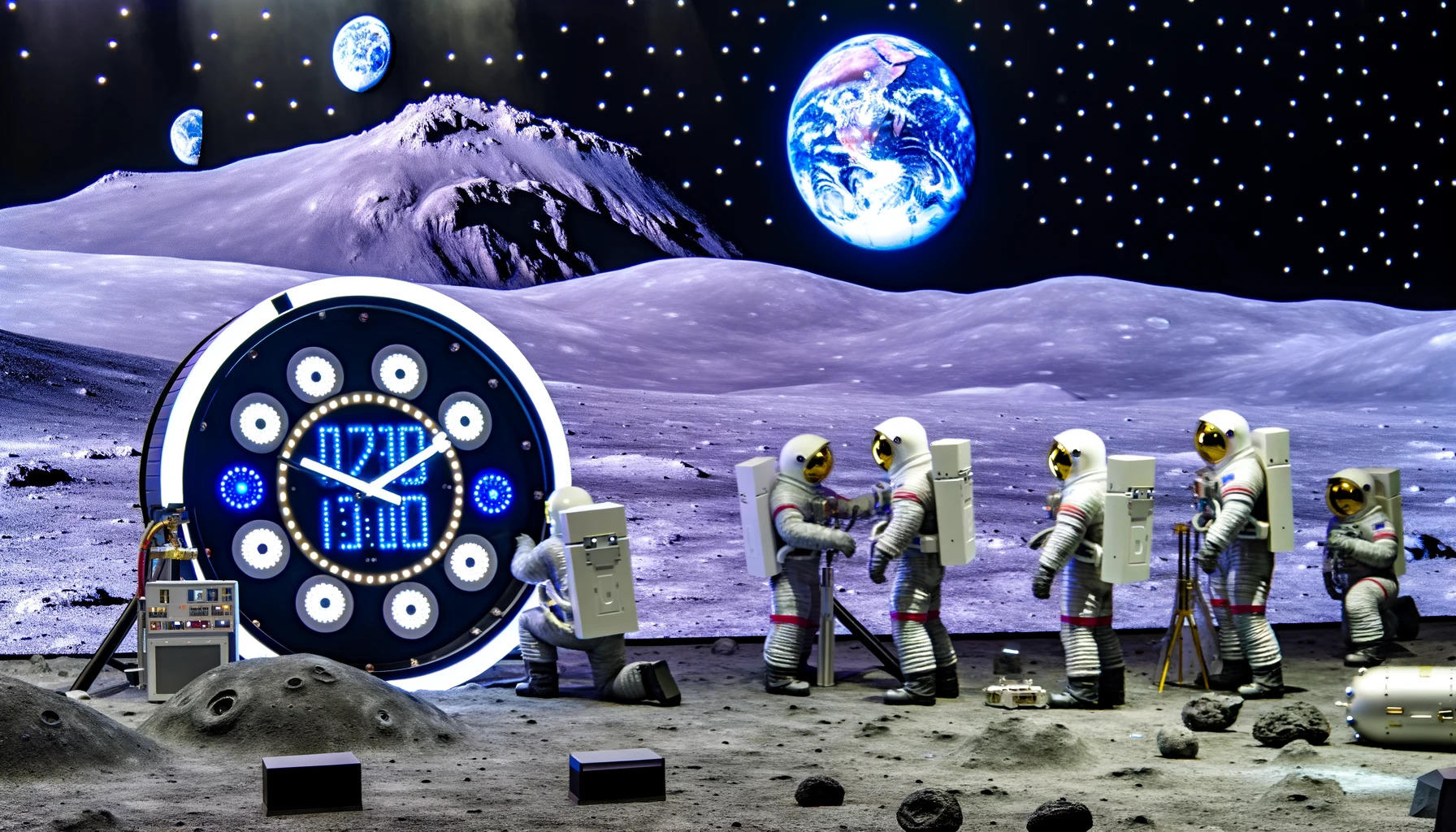[ad_1]
The White House has taken a groundbreaking step by instructing Nasa to establish a unified standard of time for the moon and other celestial bodies, aiming to set international norms in the burgeoning lunar race among nations and private enterprises.
The directive, emanating from the White House Office of Science and Technology Policy (OSTP), tasks Nasa with collaborating across US government departments to devise a strategy by the end of 2026 for what it terms Coordinated Lunar Time (CLT).This initiative addresses the variances in time perception due to differing gravitational forces on celestial bodies compared to Earth, affecting lunar spacecraft and satellites’ precision requirements.
Kevin Coggins, Nasa’s space communications and navigation chief, underscored the significance, saying, “The same clock that we have on Earth would move at a different rate on the moon.” OSTP chief Arati Prabhakar’s memo elaborated on the technical aspects, noting an Earth-based clock would seemingly lose 58.7 microseconds per Earth day on the moon, with other periodic variations further diverging lunar from Earth time.
Coggins metaphorically added, “Think of the atomic clocks at the US Naval Observatory. They’re the heartbeat of the nation. You’re going to want a heartbeat on the moon.”
The initiative underscores Nasa’s Artemis program goals, which include astronaut missions and establishing a lunar base to facilitate future Mars missions. An OSTP official highlighted the unified lunar time’s critical role in ensuring secure data transfers and synchronized communications among Earth, lunar satellites, bases, and astronauts. The discrepancies could potentially lead to errors in mapping and positioning.
‘How disruptive’
“Imagine if the world wasn’t syncing their clocks to the same time – how disruptive that might be,” the official remarked, emphasizing the need for a global synchronization akin to the Earth-based Coordinated Universal Time (UTC). This standard, which is defined by the UN’s International Telecommunication Union, relies on atomic clocks globally to provide a precise time measurement.
The OSTP memo outlined the necessity for international agreements to implement Coordinated Lunar Time, citing the Artemis Accords—a pact signed by 36 nations outlining space and lunar conduct—as a framework for collaboration. Notably, China and Russia, significant US rivals in space, are not signatories to these accords.
This directive marks a pivotal moment in space exploration and international cooperation, aiming to establish a time standard that ensures the accuracy, resilience, and scalability required for the challenging lunar environment, benefiting all spacefaring nations.
(With inputs from agencies)
The directive, emanating from the White House Office of Science and Technology Policy (OSTP), tasks Nasa with collaborating across US government departments to devise a strategy by the end of 2026 for what it terms Coordinated Lunar Time (CLT).This initiative addresses the variances in time perception due to differing gravitational forces on celestial bodies compared to Earth, affecting lunar spacecraft and satellites’ precision requirements.
Kevin Coggins, Nasa’s space communications and navigation chief, underscored the significance, saying, “The same clock that we have on Earth would move at a different rate on the moon.” OSTP chief Arati Prabhakar’s memo elaborated on the technical aspects, noting an Earth-based clock would seemingly lose 58.7 microseconds per Earth day on the moon, with other periodic variations further diverging lunar from Earth time.
Coggins metaphorically added, “Think of the atomic clocks at the US Naval Observatory. They’re the heartbeat of the nation. You’re going to want a heartbeat on the moon.”
The initiative underscores Nasa’s Artemis program goals, which include astronaut missions and establishing a lunar base to facilitate future Mars missions. An OSTP official highlighted the unified lunar time’s critical role in ensuring secure data transfers and synchronized communications among Earth, lunar satellites, bases, and astronauts. The discrepancies could potentially lead to errors in mapping and positioning.
‘How disruptive’
“Imagine if the world wasn’t syncing their clocks to the same time – how disruptive that might be,” the official remarked, emphasizing the need for a global synchronization akin to the Earth-based Coordinated Universal Time (UTC). This standard, which is defined by the UN’s International Telecommunication Union, relies on atomic clocks globally to provide a precise time measurement.
The OSTP memo outlined the necessity for international agreements to implement Coordinated Lunar Time, citing the Artemis Accords—a pact signed by 36 nations outlining space and lunar conduct—as a framework for collaboration. Notably, China and Russia, significant US rivals in space, are not signatories to these accords.
This directive marks a pivotal moment in space exploration and international cooperation, aiming to establish a time standard that ensures the accuracy, resilience, and scalability required for the challenging lunar environment, benefiting all spacefaring nations.
(With inputs from agencies)
[ad_2]
Source link


